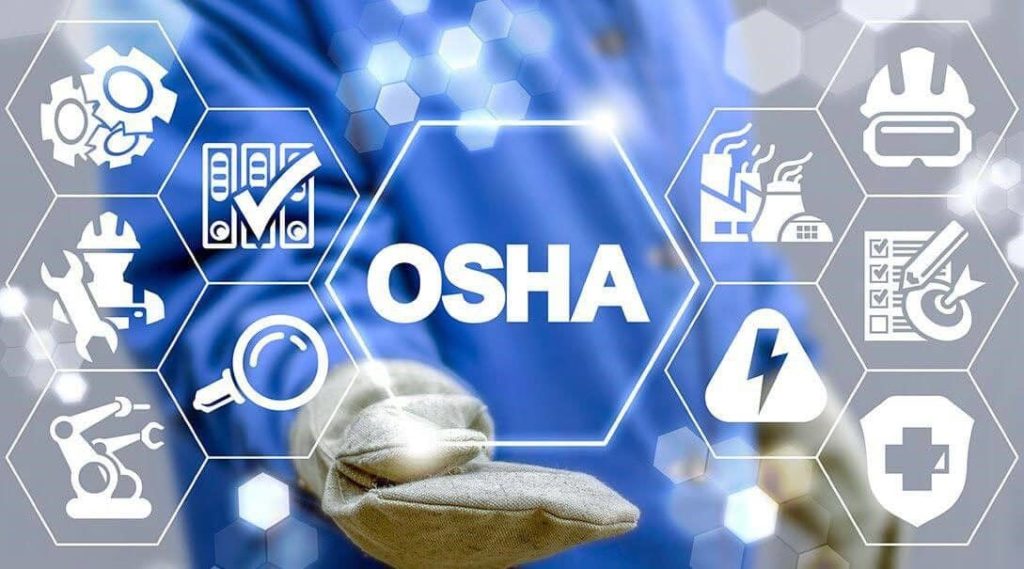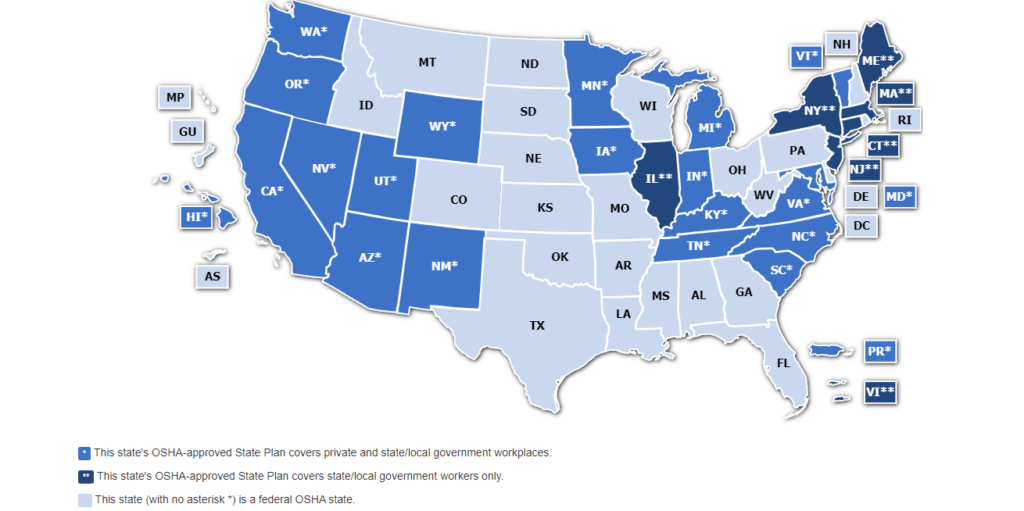Osha Laws & Regulations & the Importance of Compliance
Last updated: September 20th, 2023

Contents
If you are a restoration business owner, you should be familiar with OSHA, or the Occupational Safety Health Administration (OSHA). If you’re newer to restoration or interested in learning more about protecting your employees, we will discuss some critical regulations and their importance.
OSHA forms part of the United States Department of Labor. These are federal guidelines that you need to abide by; this means EVERYONE, there are no exceptions, has to follow these guidelines. The purpose is to ensure the safety of workers and prevent work-related injuries, illnesses, and deaths.
There are, however, some state laws that are unique to each state, and everyone needs to be aware of them. For example, according to Osha.gov the state of Illinois operates an OSHA-approved State Plan covering only state and local government workers. Federal OSHA covers private-sector employers and their workers.

I was recently at the Experience Trade Show, where I had the opportunity to attend a couple of instructional sessions. There was one that David Hodge led from Reets Drying Academy, who explained the consequences of not obeying OSHA regulations.
Why Become Familiar with OSHA Regulations?
The answer is simple: It can cost you a lot of money!
Protect yourself and your company with some knowledge, and only a few minor changes. An employee could be at the wrong place at the wrong time, or an employee might not be properly wearing the personal protective equipment (PPE) provided by the company. These may seem like minor issues, but OSHA fines can cost you tens of thousands of dollars.
In order to prevent a citation from occurring, it’s important to keep in mind OSHA’s top ten most frequently cited standards. A citation is highly preventable if your company takes proactive steps to provide a safe work environment and the necessary equipment to avoid receiving that hefty fine.
Most Common OSHA Violations
List of the Top 10 OSHA Violations:
-
Fall Protection (Construction)
-
Respiratory Protection, General Industry
-
Ladders, Construction
-
Hazard Communication, General Industry
-
Scaffolding, Construction
-
Fall Protection Training, Construction
-
Control of Hazardous Energy (lockout/tagout), general industry
-
Eye and Face Protection, Construction
-
Powered Industrial Trucks, General Industry
-
Machinery and Machine Guarding, General Industry

How to Minimize the Safety Risk in Your Business
1. Schedule Regular Training Sessions
Consistent communication with your team is critical when going out for a job. Your team should eventually be able to quickly and accurately tell you what safety equipment they need to wear, what equipment they are allowed to use, etc.
2. Understand the Hierarchy of Control
When it comes to the restoration industry, you are confronted with a new situation every day and often find yourself at risk of being exposed to hazardous materials. That’s why the workplace has to do its part in helping minimize the risk. It’s crucial to know the hierarchy of control.

The picture on the right is The 5 Parts of the OSHA Hierarchy of Controls. The goal is to manage a hazard with a control method as close to the top of the hierarchy as possible. It starts at the top with the most effective and preferred way of reducing exposure to hazardous materials.
The highest level, in blue, is elimination; you eliminate the dangerous material. However, there are cases where that is simply not possible, especially in restoration.
You could then try to substitute the hazard with a safer alternative, that will also minimize the risk. This is likely not an option for most restoration projects, due to the nature of our business.
The third level is engineering controls which help isolate workers from danger; the employer can accomplish this by modifying the equipment or workplace, using protective barriers, and removing or blocking the hazard from coming into contact with the workers.
The fourth level, administrative controls focus on reducing the hazard’s intensity, duration, and frequency, this could include but is not limited to job rotation, ensuring adequate breaks, and limiting access to the hazardous material or machine.
The final level is the use of PPE. It’s considered protective equipment for the eyes, face, head, and extremities through protective clothing, respiratory devices, protective shields, and barriers. Employers should never rely on using PPE alone, especially if other control options are available. If the employers cannot use other control options, they must provide PPE.
3. The 4 Phases of Emergency Management
You can set yourself up for success by creating an emergency management plan. Several industries have adopted this plan and adapted it accordingly based on the needs of their industry. The four phases are mitigation, preparedness, response, and recovery.
The graphic below shows each phase of the emergency management cycle.

The mitigation phase involves taking preventative measures to minimize losses and disaster impacts. The preparedness phase is the continuous cycle of planning, protocols, and procedures, evaluating and taking corrective action during the incident response; it’s also where plenty of training occurs. The response phase refers to the immediate action taken at the time. It’s the remediation period, which is correcting something bad or defective. In emergency operations, it refers to the actual execution of the plan. In its final phase, recovery helps provide long-term treatment and care to impacted buildings; it evaluates lessons learned, reports post-incident and is a time for rebuilding. Preparation for future incidents should include all of these elements. It’s a cycle that happens in all situations—keeping in mind that when responding to these emergencies, it’s easy to just run on adrenaline. Still, the priority should always be the safety of every employee.
If you would like more in-depth information on any of the guidelines and regulations or if you need any resources in Spanish, you can go to https://www.osha.gov/. If you need to speak directly to someone, you can find the nearest OSHA office using this map.
What you should do now
- Get a Free Demo and see how Albiware can help solve your restoration software challenges.
- Read more articles in our blog.
- If you know someone who’d enjoy this article, share it with them via Facebook, Twitter, LinkedIn, or email.